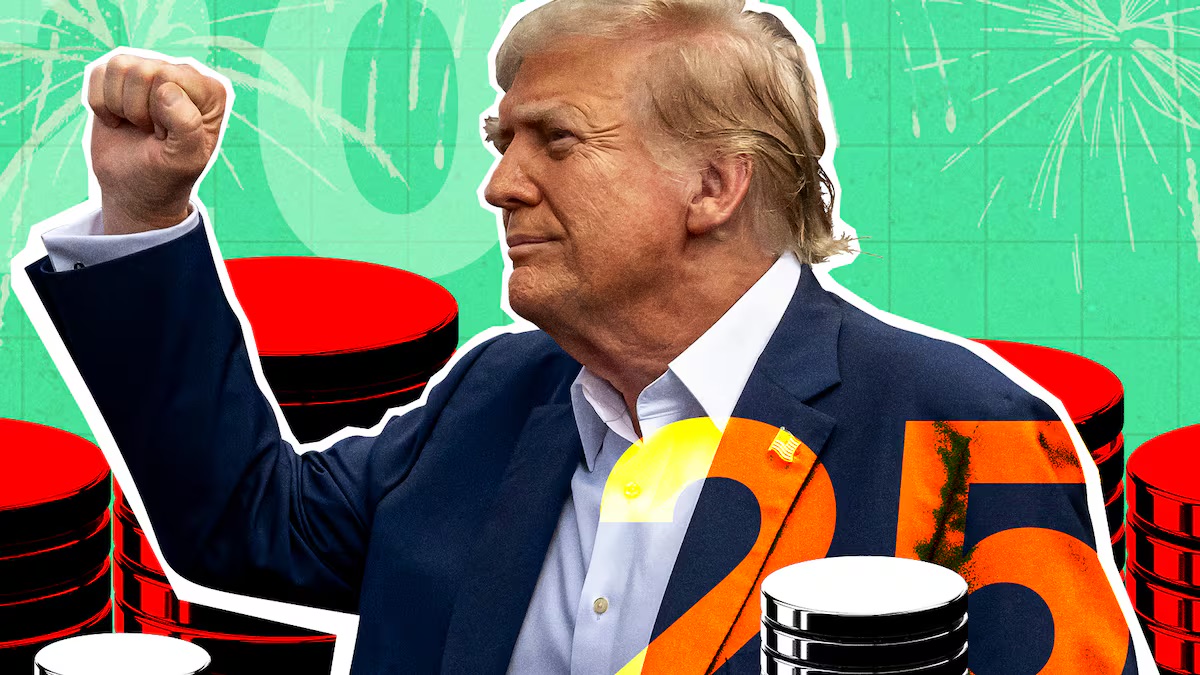The cryptocurrency market took a sharp downturn today as Bitcoin (BTC) fell below the $100,000 mark, reacting to the latest tariff announcements from President Donald Trump. The administration confirmed that steep import tariffs on goods from Canada, Mexico, and China will go into effect starting Tuesday, triggering a wave of uncertainty in global markets.
The move has prompted retaliatory actions from Canada and Mexico, while China has vowed to take “corresponding countermeasures” and is preparing to file a lawsuit with the World Trade Organization (WTO). The uncertainty surrounding global trade has rattled investors, leading to a widespread sell-off in both traditional and digital asset markets.
Meme Coins Hit Hard by the Market Slump
While Bitcoin and major altcoins have suffered losses, meme coins have been among the hardest hit, experiencing double-digit percentage drops in the past 24 hours.
Notably, Trump’s own memecoin ($TRUMP) has plunged nearly 30% in the last week, highlighting just how fragile the hype-driven segment of the crypto market can be. Other popular memecoins, including Dogecoin (DOGE), Shiba Inu (SHIB), and Pepe (PEPE), have also seen steep declines as traders flee riskier assets.
Why Are Crypto Markets Reacting?
Historically, tariffs and trade wars tend to create volatility in financial markets. The crypto market, often seen as a hedge against traditional financial instability, is not immune to broader economic uncertainties. Investors may be pulling out funds in response to:
- Fears of an economic slowdown caused by escalating trade tensions.
- A stronger US dollar, which often weakens demand for Bitcoin and other digital assets.
- Decreased risk appetite, leading traders to sell speculative assets like meme coins.
What’s Next for the Crypto Market?
Analysts are watching key support levels for Bitcoin, with some suggesting that a sustained break below $100,000 could lead to further declines. Meanwhile, altcoins and memecoins may remain under pressure as the market digests the long-term impact of these tariffs.
However, some traders believe this dip presents a buying opportunity, especially if Bitcoin stabilizes and institutional investors step in to accumulate at lower prices.
As the situation unfolds, the crypto market will likely remain highly reactive to geopolitical and macroeconomic developments. Traders should brace for further volatility in the coming days.
Conclusion
The tariff-driven downturn serves as a reminder that crypto markets are not isolated from global economic policies. While Bitcoin’s dip below $100K is a significant event, the resilience of the market will depend on how investors respond to changing economic conditions and potential regulatory shifts.
For now, all eyes are on how global trade partners react and whether the crypto market can recover from this latest macroeconomic shock.


